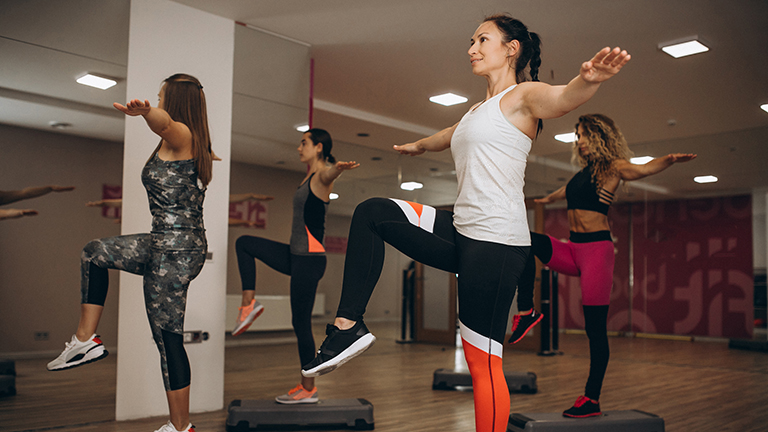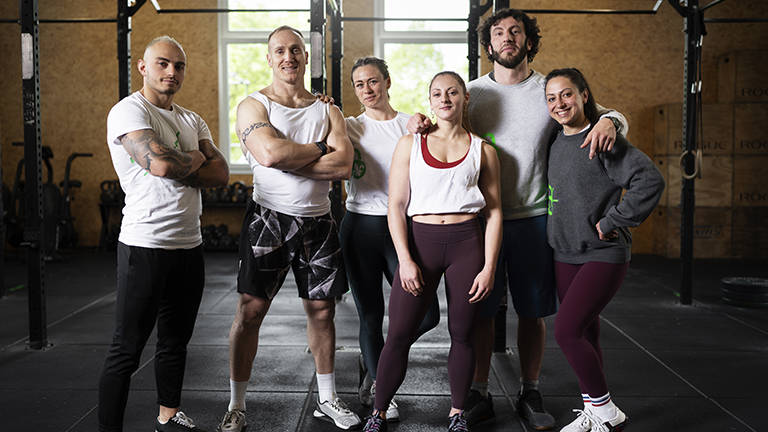Group fitness workouts have become a global trend in the health and wellness industry. Unlike solo training, where motivation can sometimes fade, group fitness provides an environment of energy, accountability, and community. When people gather to exercise together, the shared enthusiasm creates a motivating atmosphere that pushes everyone to perform at their best. Group workouts can take many forms, ranging from yoga and Pilates to high intensity interval training, dance classes, boot camps, and indoor cycling.
Fitness experts believe that group workouts not only enhance physical health but also improve mental well-being by reducing stress, increasing confidence, and boosting social interaction. Whether you are a beginner stepping into your first fitness class or an advanced athlete looking to challenge yourself, group fitness workouts offer a variety of options to suit your goals.
In this guide, we will explore the many benefits, types, and techniques of group workouts. We will also cover how to choose the right program, tips to maximise results, safety measures, and emerging trends in the fitness industry.
Why Group Fitness Workouts Are Growing in Popularity
The rise of group fitness is not accidental. In modern society, people often seek both efficiency and social connection. Group classes provide structured, instructor-led workouts that save time and guarantee effectiveness. At the same time, exercising alongside others satisfies the natural human desire for community.
Another factor driving the popularity of group fitness workouts is variety. From strength training in groups to rhythm-based Zumba classes, there is something for everyone. Many gyms and fitness centers now design schedules packed with different options so participants can mix up their routines and avoid boredom.
Technology has also contributed to this growth. Social media influencers often highlight group training experiences, while apps make it easy to join sessions virtually or book in-person classes. The accessibility of both in-studio and online group workouts has made it easier for more people to participate consistently.
Benefits of Group Fitness Workouts for Body and Mind
Group fitness workouts provide a range of benefits beyond physical results. Physically, participants improve cardiovascular health, muscle strength, endurance, flexibility, and balance. Mentally, group workouts reduce stress, increase energy levels, and promote feelings of happiness through the release of endorphins.
One of the most significant advantages of group training is accountability. When you commit to a scheduled class with others, you are less likely to skip it. Additionally, instructors ensure that participants maintain proper form and follow safe exercise practices, which reduces the risk of injury compared to training alone without guidance.
Social interaction is another powerful benefit. People often form friendships in group classes, which enhances consistency and motivation. This sense of belonging is particularly helpful for beginners who may otherwise feel intimidated in a gym setting.
Group fitness workouts also help with weight loss goals. Structured classes often include calorie-burning exercises such as HIIT, indoor cycling, and dance-based sessions. Combined with community motivation, these workouts can accelerate fat loss and improve body composition.
Different Types of Group Fitness Workouts
Cardio-Based Group Workouts
Cardio classes remain one of the most popular categories of group fitness workouts. These sessions focus on increasing heart rate, improving lung capacity, and burning calories. Options include aerobics, step classes, kickboxing, and indoor cycling. Each class provides an energetic environment with music and choreography that keeps participants engaged.
Strength and Resistance Training in Groups
Strength training is no longer limited to solo gym sessions. Many group classes incorporate resistance bands, dumbbells, kettlebells, and bodyweight movements. Participants perform circuits or timed sets designed to target major muscle groups. This format provides both strength development and cardiovascular benefits.
Mind-Body Classes: Yoga, Pilates, and Meditation
Mind-body classes such as yoga and pilates emphasize flexibility, balance, posture, and mental clarity. These sessions are ideal for reducing stress, improving core strength, and enhancing overall mobility. Meditation or breathing exercises are often included, creating a holistic workout that benefits both body and mind.
Dance and Rhythm-Based Workouts (Zumba, Aerobics)
Dance fitness programs like Zumba combine fun choreography with aerobic conditioning. These classes appeal to those who enjoy music-driven workouts. Dance classes not only burn calories but also improve coordination, rhythm, and agility.
Bootcamp and HIIT Classes
Bootcamp and high intensity interval training classes are designed for maximum calorie burn in a short amount of time. These workouts involve alternating between short bursts of intense activity and recovery periods. Bootcamps often combine strength, agility, and cardio drills, creating a total-body challenge.
Choosing the Right Group Fitness Workout for Your Goals
Not every group class is suitable for every individual. The best choice depends on your fitness level, health condition, and personal goals. For example, beginners might benefit from low-impact cardio or yoga, while advanced participants may prefer HIIT or circuit training.
Weight loss seekers can focus on high-energy cardio classes, while those seeking strength and muscle tone should join resistance-based group sessions. Individuals looking for stress relief may enjoy yoga or pilates. By identifying your goals, you can select the group fitness workout that maximises results while maintaining enjoyment.
Group Fitness Workouts for Beginners vs Advanced Levels
Beginners often need more guidance, slower pacing, and simplified movements. Many group classes offer beginner-friendly versions of exercises to accommodate different levels. In contrast, advanced participants benefit from higher intensity, heavier resistance, and complex variations.
Instructors usually demonstrate modifications for different levels, ensuring inclusivity within the same class. This adaptability makes group fitness appealing to a wide audience. Beginners gain confidence over time, eventually progressing to more advanced workouts.
Indoor vs Outdoor Group Fitness Workouts
Indoor classes typically occur in gyms or studios, with controlled environments, music, and professional equipment. Examples include spin classes, pilates, and aerobics. Outdoor group workouts, on the other hand, offer fresh air and natural surroundings. Bootcamps in parks, beach yoga, and running clubs are common outdoor options.
Both indoor and outdoor workouts have unique advantages. Indoors allows for year-round consistency regardless of weather, while outdoors provides variety, sunshine, and a natural energy boost. Many fitness communities combine both options to keep participants engaged.
The Role of Motivation and Community in Group Training
Motivation is one of the strongest reasons people stick with group fitness workouts. Exercising in a supportive community builds accountability and inspires individuals to push harder. Peer encouragement during challenging exercises helps people go beyond their comfort zones.
Group settings also create a competitive yet friendly atmosphere. Seeing others achieve their goals encourages participants to stay committed. The community element fosters long-term consistency, which is essential for lasting results.
Common Mistakes to Avoid in Group Fitness Classes
Despite their benefits, group fitness workouts can be less effective if certain mistakes are made. Overexertion is common when participants try to keep up with advanced peers. Poor form can also occur if individuals focus too much on speed rather than technique.
Another mistake is inconsistency. Attending classes irregularly reduces progress. Additionally, not communicating injuries or limitations to instructors can increase the risk of harm. Awareness of these mistakes helps participants get the most from group training while staying safe.
Expert Tips for Maximising Results from Group Workouts
Experts recommend setting specific fitness goals before joining classes. Tracking progress through journals or apps helps maintain focus. Proper nutrition and hydration before and after sessions enhance performance and recovery.
Consistency is the key to long-term success. Attending classes regularly ensures gradual improvement. Listening to your body is equally important; rest days prevent burnout and reduce the risk of injury. Finally, building relationships with classmates and instructors strengthens motivation.
Safety Guidelines and Injury Prevention in Group Fitness
Safety should always come first in any fitness routine. Warm-ups and cool-downs are essential for preventing injuries. Proper footwear and equipment also play a vital role. Instructors typically provide guidance on correct form, but participants should remain mindful of their own limits.
Gradual progression is safer than sudden intensity increases. Beginners should focus on mastering basic movements before attempting advanced variations. Staying hydrated and maintaining proper breathing techniques further support safe performance.
How to Stay Consistent with Group Fitness Programs
Consistency determines results in fitness. To stay consistent, schedule group workouts as part of your weekly routine. Many participants find it easier to commit when classes are treated like appointments. Choosing workouts that you genuinely enjoy also improves long-term adherence.
Variety is another factor. Rotating between cardio, strength, and mind-body classes prevents boredom and ensures balanced development. Surrounding yourself with supportive peers enhances motivation and keeps you coming back.
Group Fitness Workouts and Weight Loss Goals
Weight loss remains one of the most common reasons people join group fitness workouts. High-energy classes such as spin, Zumba, and HIIT burn significant calories in a short period. When combined with a balanced diet, group training can accelerate fat loss.
The community aspect helps participants remain committed to their goals. Group workouts prevent the isolation that sometimes leads to quitting. Regular sessions build discipline, consistency, and long-term lifestyle changes that support sustainable weight management.
On the Popularity of Group Fitness
Dr. Amanda Lewis, Certified Exercise Physiologist (ACE):
“Group fitness has grown because people crave structure, motivation, and accountability. Unlike solo training, classes provide an immediate sense of community and belonging, which helps participants stay consistent long-term.”
On the Benefits of Group Fitness
James O’Connor, Strength and Conditioning Coach:
“Exercising in a group pushes you to work harder than you would alone. Studies show participants in group HIIT or cycling classes burn more calories because the competitive environment drives effort.”
Dr. Rina Patel, Sports Psychologist:
“Beyond physical health, group workouts improve mental well-being by reducing stress and social isolation. The group dynamic builds confidence and resilience, which is often overlooked in fitness discussions.”
On Choosing the Right Class
Sarah Jennings, Group Fitness Instructor (Les Mills Certified):
“Newcomers should never feel pressured to jump into the hardest class. Start with something low-impact like yoga or beginner circuit training, then gradually progress. The key is finding a format that you enjoy enough to sustain.”
On Common Mistakes
Michael Tran, Physiotherapist:
“The biggest mistake I see is participants ignoring their body’s limits just to keep up with the group. Proper form matters more than speed or weight. Always communicate injuries to the instructor so modifications can be made.”
On Weight Loss and Body Transformation
Dr. Carla Hughes, Nutrition and Fitness Specialist:
“Group fitness is powerful for weight loss because it combines accountability, structured programming, and calorie-burning intensity. When paired with balanced nutrition, it’s one of the most effective strategies for long-term fat reduction.”
Future Trends in Group Fitness Workouts
The fitness industry continues to evolve, and group training is no exception. Virtual group classes are becoming increasingly popular, allowing people to join workouts from home while still experiencing community energy. Hybrid models, where participants can choose between in-person and online attendance, are also on the rise.
Functional training is another growing trend. These workouts focus on movements that improve daily activities, making fitness practical as well as effective. Technology-driven classes, such as those incorporating wearables and performance tracking, are also gaining popularity.
Sustainability is becoming a priority in the industry. Outdoor eco-friendly classes and wellness retreats are expected to grow. The future of group fitness will likely emphasise accessibility, exclusivity, and holistic well-being.
Conclusion
Group fitness workouts provide far more than physical benefits. They foster motivation, accountability, and a sense of community. With options ranging from strength training and yoga to high intensity bootcamps and dance fitness, there is a class for everyone regardless of fitness level or goal.
By choosing the right program, staying consistent, and practising safety, participants can achieve remarkable results in both body and mind. As the fitness industry continues to evolve, group workouts will remain a powerful tool for building healthier lifestyles and stronger communities.


